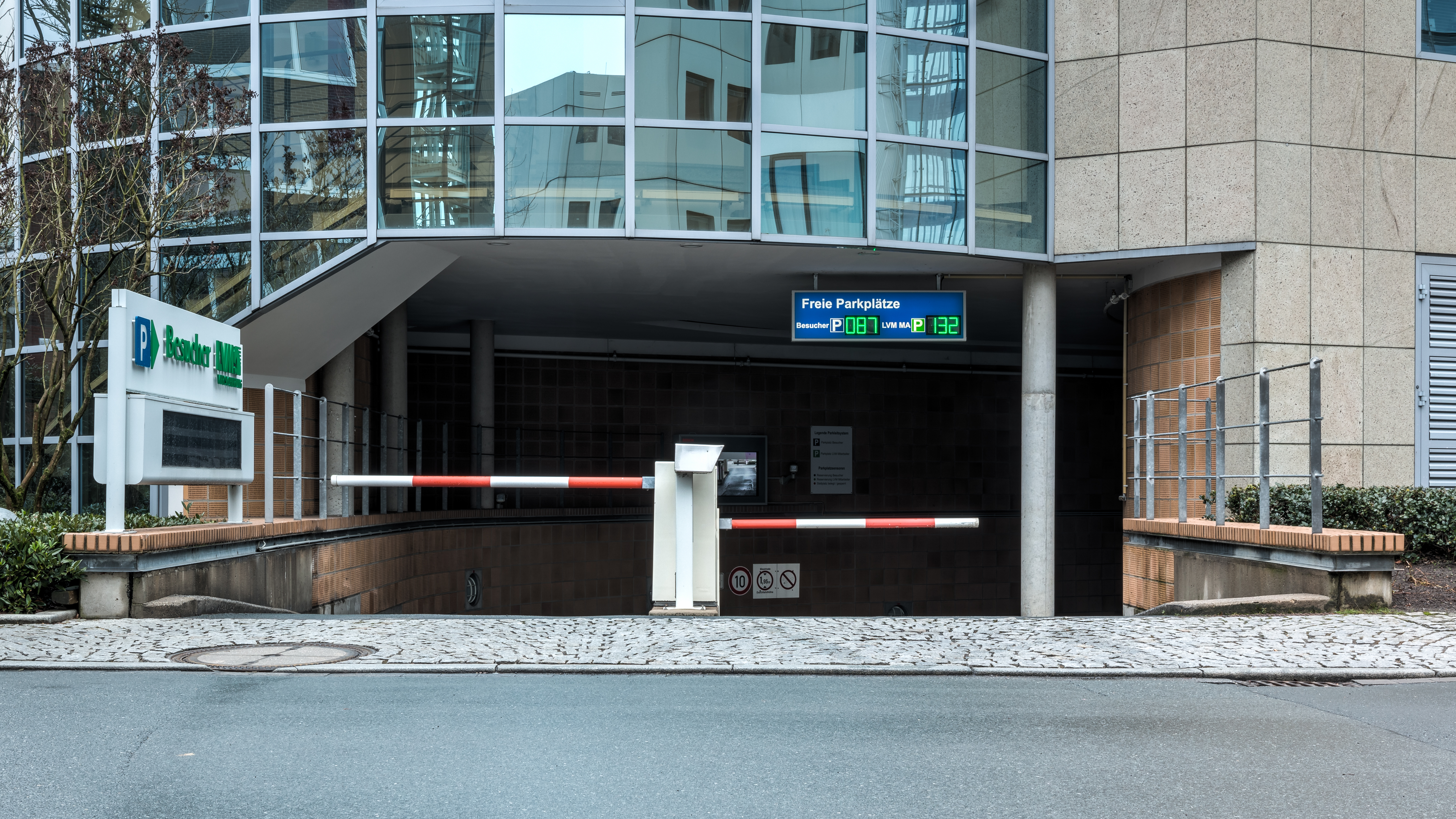Boom barrier on:
[Wikipedia]
[Google]
[Amazon]

 A boom barrier, also known as a boom gate, is a bar, or pole pivoted to allow the boom to block vehicular or pedestrian access through a controlled point. Typically the tip of a boom gate rises in a vertical arc to a near vertical position. Boom gates are often
A boom barrier, also known as a boom gate, is a bar, or pole pivoted to allow the boom to block vehicular or pedestrian access through a controlled point. Typically the tip of a boom gate rises in a vertical arc to a near vertical position. Boom gates are often
 Boom gates are typically found at
Boom gates are typically found at

 A boom barrier, also known as a boom gate, is a bar, or pole pivoted to allow the boom to block vehicular or pedestrian access through a controlled point. Typically the tip of a boom gate rises in a vertical arc to a near vertical position. Boom gates are often
A boom barrier, also known as a boom gate, is a bar, or pole pivoted to allow the boom to block vehicular or pedestrian access through a controlled point. Typically the tip of a boom gate rises in a vertical arc to a near vertical position. Boom gates are often counterweight
A counterweight is a weight that, by applying an opposite force, provides balance and stability of a mechanical system. The purpose of a counterweight is to make lifting the load faster and more efficient, which saves energy and causes less wea ...
ed, so the pole is easily tipped. Boom gates are often paired either end to end, or offset appropriately to block traffic in both directions. Some boom gates also have a second arm which hangs 300 to 400 mm below the upper arm when lowered, to increase approach visibility, and which hangs on links so it lies flat with the main boom as the barrier is raised. Some barriers also feature a pivot roughly half way, where as the barrier is raised, the outermost half remains horizontal, with the barrier resembling an upside-down ''L'' when raised.
Automatic boom barrier
There are various technologies for an automatic boom barrier. One of them is electro-mechanical, which is widely used due to its reliability. The other technologies are often manufacturer specific. These electro-mechanical devices come with 24-volt direct-current drive units which can run continuously without generating heat, so electro-mechanical boom barriers can be operated continuously and in an intensive duty cycle. An automatic boom barrier can be operated through: * Push button * Remote control * Radio-frequency identification (RFID) tags / RFID reader * Loop detectors * Opto-electronic sensors * Automatic Number Plate Recognition System by Gaido TechnologiesUsage
 Boom gates are typically found at
Boom gates are typically found at level crossings
A level crossing is an intersection where a railway line crosses a road, path, or (in rare situations) airport runway, at the same level, as opposed to the railway line crossing over or under using an overpass or tunnel. The term als ...
, drawbridges, parking facilities
Parking is the act of stopping and disengaging a vehicle and leaving it unoccupied. Parking on one or both sides of a road is often permitted, though sometimes with restrictions. Some buildings have parking facilities for use of the buildings' ...
, checkpoints and entrances to restricted areas. They are also the usual method for controlling passage through toll booths, and can also be found on some freeway
A controlled-access highway is a type of highway that has been designed for high-speed vehicular traffic, with all traffic flow—ingress and egress—regulated. Common English terms are freeway, motorway and expressway. Other similar terms ...
entrance ramps which are automatically controlled to drop to restrict traffic in the event of accident cleanup or road closures without the need to dispatch road workers or law enforcement to use a vehicle to block the way.
Some boom gates are automatic and powered; others are manually operated. Manual gates are sometimes hung in the manner of a normal gate (i.e. hinged horizontally).
In some places, boom gates are installed across suburban streets as a traffic calming
Traffic calming uses physical design and other measures to improve safety for motorists, pedestrians and cyclists. It has become a tool to combat speeding and other unsafe behaviours of drivers in the neighbourhoods. It aims to encourage safe ...
measure, preventing through traffic, while allowing authorised vehicle
A vehicle (from la, vehiculum) is a machine that transports people or cargo. Vehicles include wagons, bicycles, motor vehicles (motorcycles, cars, trucks, buses, mobility scooters for disabled people), railed vehicles (trains, trams), ...
s such as emergency services and bus
A bus (contracted from omnibus, with variants multibus, motorbus, autobus, etc.) is a road vehicle that carries significantly more passengers than an average car or van. It is most commonly used in public transport, but is also in use for cha ...
es to take advantage of the shorter and more direct route.
See also
* Automatic full barriers * Toll collection technologyReferences
{{DEFAULTSORT:Boom Barrier Street furniture Level crossings Protective barriers Railway buildings and structures English inventions Road infrastructure Traffic calming Types of gates